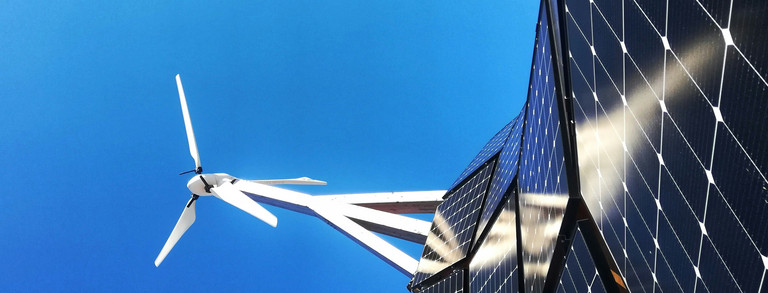Renewable energy forecasts and their impact on electricity prices
C02 aims for more reliable probabilistic wind and solar power forecasts to improve supply security by renewable energies. The impact of renewable energy forecasts on electricity prices will be analyzed, taking cross-country effects in interconnected and coupled electricity markets in Europe into account. In the long run, methodologies for probabilistic deep learning structures and online learning algorithms will be put forward to forecast electric load and (battery) storage.
Project Leaders
JProf. Dr. Antonia Arsova
Department of Statistics - Chair of Econometrics
TU Dortmund University
Prof. Dr. Florian Ziel
Faculty of Business and Economics - Chair of Data Science in Energy and Environment
University of Duisburg-Essen
Summary
We will develop models to improve probabilistic wind and solar power forecasts and study their impact on electricity prices in a European context. Solar and wind power forecasting are two of the four major areas of energy forecasting (with electric load and electricity price forecasting being the other two), as they are highly relevant for power system operations and short-term portfolio management.
In particular, we will establish new high-dimensional time series models that adequately take into account the spatio-temporal structure of the underlying renewable energy supply data. Describing their full predictive distribution in space and time, these models will allow for the simulation of trajectories. The problem of forecasting these multivariate time series will be tackled by separately modeling the marginal distribution of each series and the dependence structure between them, which will be captured by a suitable copula. For the marginal distribution, we will follow a regularized GAMLSS (Generalized Additive Models for Location, Scale and Shape) framework which allows for flexible modeling of nonlinearities in the data. In addition, we will develop multi-level models for hierarchical forecasting that are scalable in high dimensions. These models will incorporate relevant information on different hierarchical levels concerning the spatial and temporal dimensions of the data, which enables coherent and more accurate forecasts at each level.
We employ this framework for forecasting wind and solar power at different aggregation levels to analyze the electricity markets in more detail. More precisely, we study the impact of renewable energy forecasts on electricity prices using modern econometric tools, such as advanced cointegration methods. The availability of a fully probabilistic modeling framework allows for a detailed analysis of the price reducing impact of renewable energies, also known as the merit-order effect. This information is valuable from the operational side, e.g., concerning storage and grid optimization, but also influences the subsidy schemes for some renewable energy producers. We put special focus on the quantification of nonlinear relationships, particularly on negative and positive price spikes that occur especially in situations of over- and undersupply. In this context, GAMLSS techniques allow again for an adequate modeling and, hence, for analyzing the differences in the price impacts of wind and solar power. Given increasingly interconnected and coupled European electricity markets, accounting for underlying cointegrating relationships, we study in detail cross-country effects of renewables on market integration. In addition to renewable energy and load forecasts in the considered markets, we consider the impact of related commodity prices in the price formation of electricity, especially of European emission allowances and conventional energy fuels like natural gas, coal and oil. We also introduce measures for monitoring the progress of European market coupling to allow for an adequate analysis of their relationships using multivariate price models.
Lebedev, A., Das, A., Pappert, S., Schlüter, S. (2025). Analyzing Uncertainty Quantification in Statistical and Deep Learning Models for Probabilistic Electricity Price Forecasting. arXiv. DOI: 10.48550/arXiv.2509.19417.
Pappert, S. (2025). The Field Equations of Penalized non-Parametric Regression. arXiv. DOI: 10.48550/arXiv.2503.14763.
Ben Amor, S., Ziel, F. (2025). Combining RNN and Linear Structures in Day-Ahead Electricity Price Forecasting. Proceedings of the 39th International Workshop on Statistical Modelling, Volume 1.
Pappert, S. (2024). Moving aggregate modified autoregressive copula-based time series models (MAGMAR-copulas). arXiv. DOI: 10.48550/arXiv.2402.01491.



